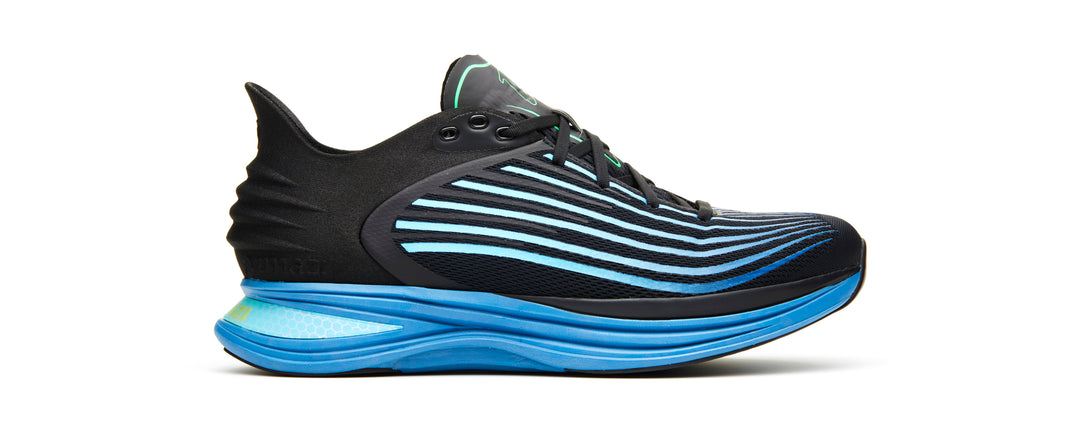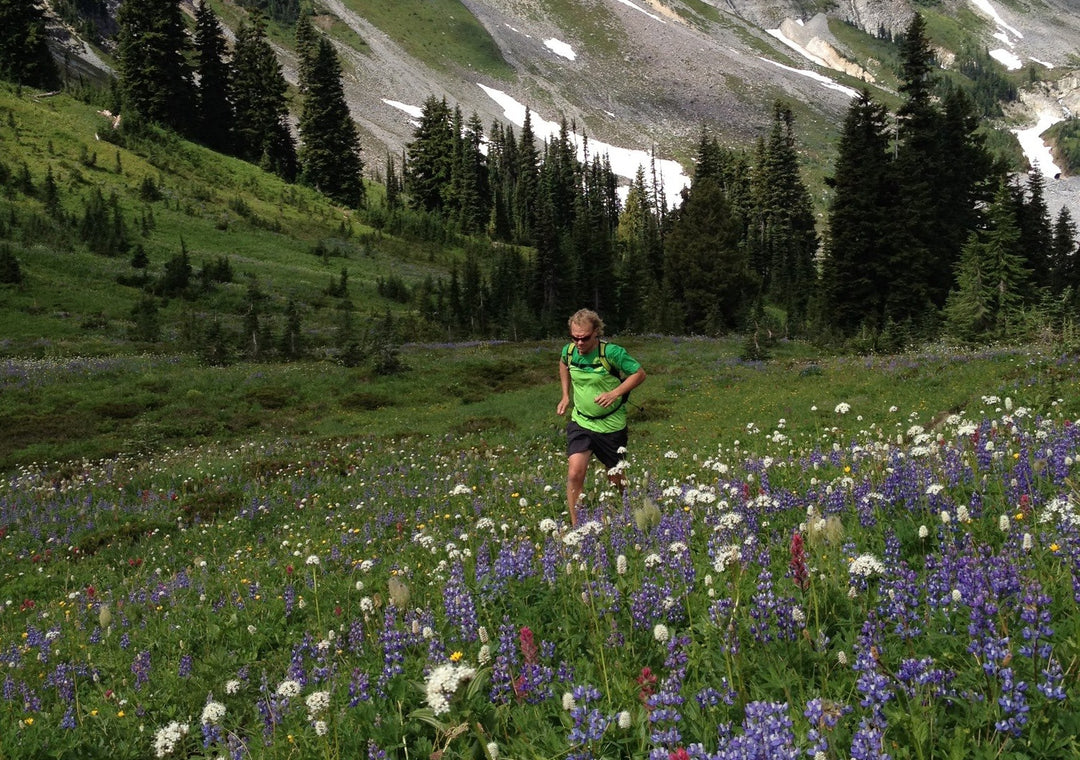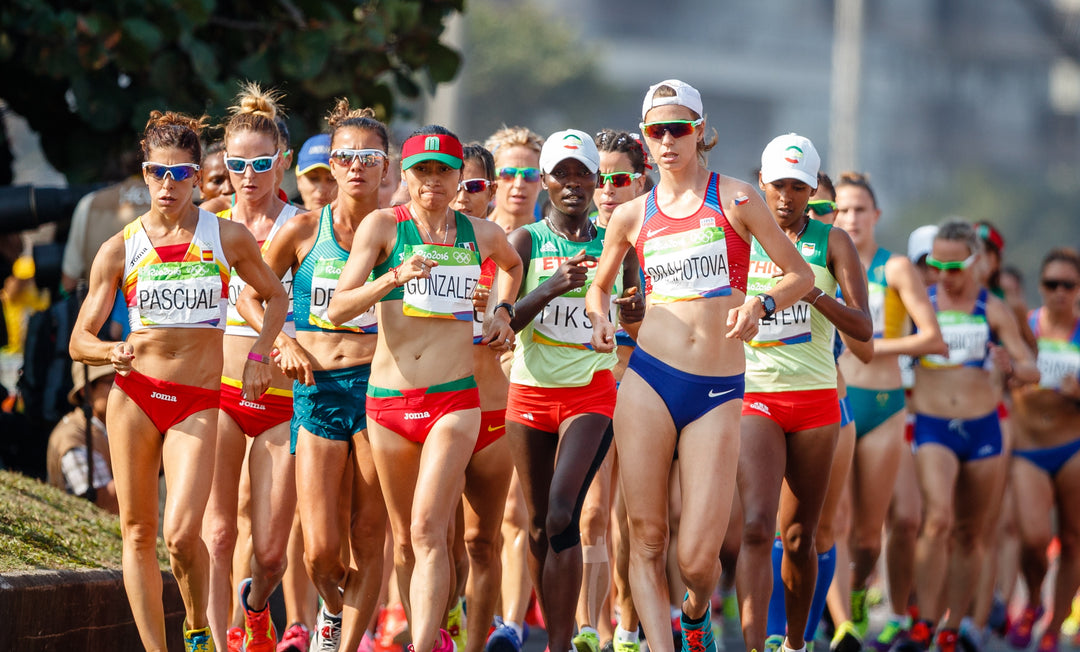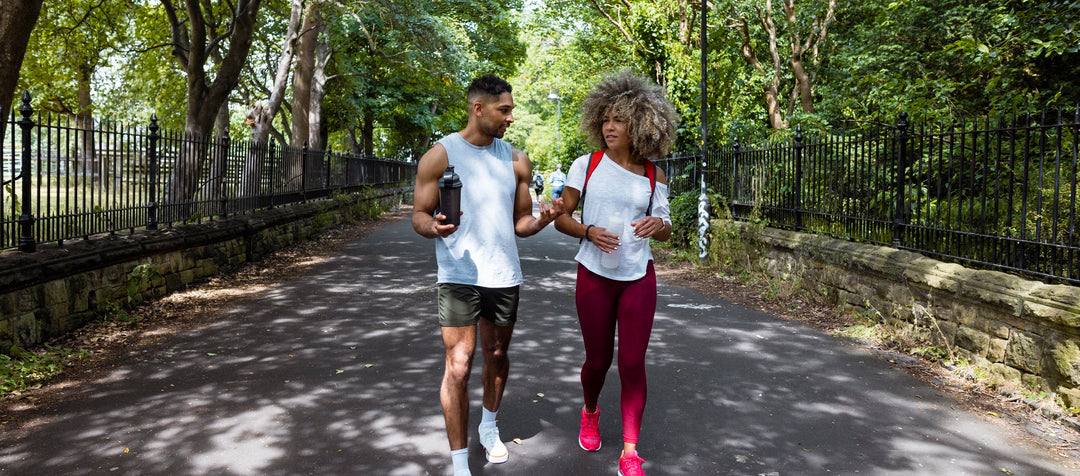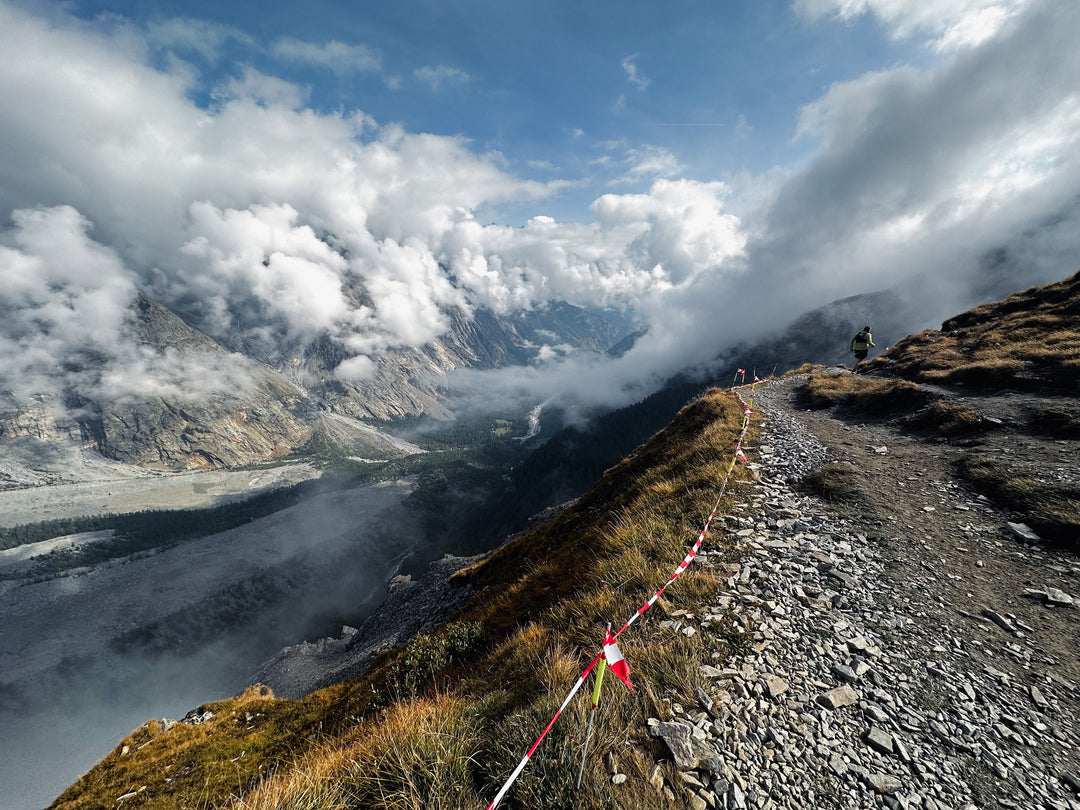Understanding a possible function of a carbon plate in running shoes
Over the past few years, many claims have been made about possible beneficial effects from plates on running economy. Many articles have been written with hypotheses for how it might work (citations 1, 2, 3, 4). I am going to explain two often confused fundamental principles of the body and physics, so that you can visualize what is possible from what is not. You should then be able to see that the popular claims are physically impossible.
The first principle is about where force is generated versus where it is transmitted. Muscles generate force. In running, the leg muscles, particularly the glutes, hamstrings, and quads, generate the forces. All leg muscles are involved in some way, but the biggest muscles generate the biggest forces.
Bones and tendons transmit force. Tendons transmit force with a slight delay, by stretching. The stretch can also damp the force and result in a small energy loss. Bones transmit force instantly and with negligible damping. This principle applies whether the body is landing or pushing off.
The second principle is that running is fundamentally a motion of two legs. This seemingly trivial principle is often overlooked when discussing the function of shoes, because people like to zoom in on one leg, and often just the foot and ankle. The reason it’s important to remember that two legs make a stride is because a significant proportion of the total force is generated by the muscles swinging the other leg. Lifting and accelerating the swing leg generates force. That force is transmitted through tendons and bones to the ground.
A plate is like bone and tendon: It transmits force, but does not generate force. How could something that does not generate force, but may have energy loss in damping, improve running economy? The answer is that it cannot, not in any configuration.
We can get a clearer picture for what is going on with forces and running economy by examining the claims one at a time.
CLAIM ONE
The bending of a plate under the ball of the foot during pushoff acts like a spring that propels you forward more efficiently.
This is perhaps the most confusing claim, because of the term “spring”. Many people incorrectly think that a spring generates force. This misconception can occur if you isolate the spring from the muscles and think about energy going into the spring and then coming back out without considering where the energy came from to begin with. A spring, even an ideal spring, simply delays the transmission of force. It cannot make the force bigger.
A plate in a shoe acting like a spring delays the transmission of the force. How much delay depends on the stiffness of the plate. The stiffer the plate, the less delay. The claim is that delaying the force transmission allows the leg muscles to be more efficient. However, remembering that the force is generated by the muscles of two legs can help you see why a delay in transmission cannot help with efficiency.
To continuously run stride after stride, the vertical velocity at the end of pushoff for each stride must be exactly right in order for the aerial phase to have the correct distance. Any deviation from the correct vertical velocity will mean that the stride length or the cadence will not be the same as the previous stride. When that happens, you get an uneven, perhaps jerky, sequence of strides. The vertical velocity at pushoff is determined by the coordinated motion of both legs. Delaying the force transmission may cause the legs to compensate by slightly adjusting how they move so that they maintain exactly the right vertical velocity, but that would not alter how much energy is required to pushoff.
A picture is often helpful in visualizing a running stride and force generation vs. force transmission. In the figure below, a running stride is shown as the coordination between the muscles in both legs. Assuming a set of movements by your arms, there is only one force profile involving two legs that will generate the exact vertical velocity at the end of the pushoff: the liftoff velocity. Muscles swing and lift one leg, while other muscles rotate the stance leg at the hip. The coordinated result is to accelerate the center of mass up and forward in a controlled movement against gravity and air resistance to achieve just the right vertical velocity. Bottom line: Since the energy output is determined by the timing and magnitude of the forces, and the timing and magnitude of the forces can’t be changed and still accomplish a sequence of controlled running strides, the energy cannot be reduced, meaning that the running economy cannot be improved. Ultimately, this means that the timing of force transmission isn’t changed by a plate, because the muscles adjust to compensate for the plate. Conversely, you may have to overcome some bending resistance and lose energy due to internal friction.

CLAIM TWO
The plate improves the function of the foam by more evenly distributing the pressure from the foot.
This claim falls victim to the very same confusion between force generation and transmission as described above. Foam, regardless of how responsive it is, cannot generate force. Exactly as described above with a plate, a spring in the form of a block of foam only transmits force from the leg muscles. Midsole foam responsiveness is discussed in greater detail in another blog post. The point here is that a plate doesn’t change the muscle forces required to maintain a running stride.
[link to supercritical post]
CLAIM THREE
The plate reduces the flexing at the ball of the foot and shifts the rotation to the ankle joint.
Whether this actually happens and whether it is any different from gripping harder with the toes is irrelevant because there is no effect on the energy needed to generate the correct liftoff velocity. Looking at the runner diagram again may be helpful: The force required to generate the liftoff velocity goes from the point of ground contact to the center of mass. The ankle, knee, and hip joints transmit the muscle force to the ground. There is no advantage to changing the angles between the joints so long as the end result is the same liftoff velocity.
There is a related phenomenon that is often confused with bending stiffness from a plate: rocker. Some people think that a rocker can improve running economy by changing the orientation of the foot during pushoff. This is no different than changing angles at the ankle or knee. However, a rocker may allow a greater proportion of the force to be transmitted with the metatarsal bones than the phalanges (toes) and reduce the tension on the toe tendons. A rocker may also feel better to people with arthritis in the metatarsal joints by reducing the range of motion at the joint. Just remember, there’s no free lunch. Shifting joint flexion to a rocker doesn’t reduce the amount of energy required to generate the liftoff velocity.
CLAIM FOUR
The plate stabilizes the foot at pushoff.
This is the idea that since the plate is stiff side to side, it will lessen how much the shoe tips from side to side. A simple diagram shows why this claim is incorrect. In words, the foam will compress according to the pressure directly above it. When there is more pressure on one side than the other, the foot (and plate) will tip. This is an extremely well understood principle of mechanical engineering and is the fundamental phenomenon that makes Vimazi shoes more stable.

FASTPOD STABILITY
Vimazi FastPods have two primary functions: First, the firmer FastPod foam resists the side to side uneven compression that softer foams experience. This makes a Vimazi shoe more stable. Second, a firmer FastPod compresses less overall than a soft midsole, so more of the energy from your muscles is transmitted by the shoe to generate the liftoff velocity and less goes into compressing the midsole and lost as heat. Vimazi takes these concepts one step further by tuning the foam densities by pace zone to strike the optimal balance between impact shock absorption and propulsion stability and efficiency.

CITATIONS
- 1.Burns GT, Tam N. Is it the shoes? A simple proposal for regulating footwear in road running. Br J Sports Med Epub ahead of print: Jul 31, 2023.
- 2.Roy J-PR, Stefanyshyn DJ. Shoe Midsole longitudinal bending stiffness and running economy, joint energy, and EMG. Med Sci Sports Exerc 2006; 38:562-9.
- 3.Hoogkamer W, Kipp S, Frank JH, et al. A comparison of the energetic cost of running in marathon racing shoes. Sports Medicine 2018a, 48:1009-19
- 4.Hoogkamer W, Kipp S, Kram R. the biomechanics of competitive male runners in three marathon racing shoes: a randomized crossover study. Sports Medicine 2018: 1 – 11.
More About Vimazi
Here’s what Vimazi does
We make pace-tuned running shoes that give runners better cushioning on impact plus more efficiency and stability during push off than previous generations of running shoes.
Vimazi running shoe lineup
As of late 2023, we offer six road running models and two trail running models, all of which come with our patented midsole technology.
PACE-TUNED ROAD SHOES
Vimazi Z20 (4:30-6 minutes per mile or 2:40-3:30 minutes per kilometer)
Vimazi Z30 (5-7 minutes per mile or 3-4:30 minutes per kilometer)
Vimazi Z40 (6-8 minutes per mile or 3:30-5 minutes per kilometer)
Vimazi Z50 (7-9 minutes per mile or 4:30-6 minutes per kilometer)
Vimazi Z60 (8-10:30 minutes per mile or 5-6:30 minutes per kilometer)
Vimazi Z70 (10-13 minutes per mile or 6:20-8 minutes per kilometer)
PACE-TUNED TRAIL SHOES
Vimazi Z2 (8-12 minutes per mile or 5-7:30 minutes per kilometer)
Vimazi Z3 (10-16 minutes per mile or 6:20-10 minutes per kilometer)
COMING SOON
Vimazi Z80 (12-16 minutes per mile or 7:30-10 minutes per kilometer)
Vimazi Z90 (16-30 minutes per mile or 10-18:30 minutes per kilometer)
The physics of pace-tuned shoes
Back in 2017, while running to his 6am interval workout, Vimazi CEO Scott Tucker had an idea. A shoe made for a specific pace, he thought, might offer better cushioning and more propulsive efficiency than a generic shoe that wasn’t “tuned” for a particular pace.
It took three years to completely nail down the physics of human running and understand the precise forces that are generated. We then built an equation that defines running forces. We’re now able to calculate the exact impact force and propulsion force, in Newtons, for any pace, including variations for height, weight, and cadence. (A Newton is a metric unit of force.) Data from the Forces in Running study we conducted aligned with the force calculations we got from our physics equation. In other words, we know it works.
Knowing the exact timing, location, and intensity of impact and propulsion forces at each pace, allowed us to create shoe models for different pace zones that respond to the appropriate forces. This means our pace-tuned technology is based on pure physics. No hand waving, no conjecture, no correlative studies, no self-reported data sets, no marketing fluff. We started with the physics of human running, and it led us to a better running solution: pace-tuned shoes.
The problem with previous gen running shoes
Most running shoes have the same foam density from heel to toe, and they’re sold to runners of every pace. The trouble is that midsole foam can’t respond correctly to the forces at all paces, nor can it respond appropriately to the differences between impact and propulsion forces. To make sure you get all the cushioning you want as well as all the efficiency and torsional stability you deserve, you need a shoe that’s made for your specific pace zone and tuned differently in the heel than the forefoot.
The Vimazi solution
Our solution to this running shoe problem was to create something that's never been done before—pace-tuned running shoes. In 2023, after years of testing, we launched seven road shoe models that span paces from 4:30 minutes per mile to 16 minutes per mile (2:40-10 minutes per kilometer). By making a shoe for a specific pace zone, we’ve been able to deliver better impact cushioning, improved stability, and increased propulsion efficiency for every runner.
25 years experience
We’ve taken everything we learned making running shoes for 25 years—plus running 10Ks, marathons, and ultras for even longer—and elevated it to a whole new level with pace tuning. It offers a better and more personal running experience. We were instrumental in creating shoes and patented footwear innovations for Montrail, Scott Sports, and Pearl Izumi. We learned even more while owning a specialty running store and organizing running events.
We also wrote a book on interval training. Running in Circles: Sciency, Gamey, Head-Scratchy Track Workouts for Faster Running contains lots of slightly wacky but serious interval workouts you’ve never heard of to help you run your best.
A marathoner’s fit
Running shoes can have the best tech, but if they don’t fit well, nobody will wear them. We wouldn’t either! Not only have we spent our careers perfecting innovative fit technologies at other companies, notably at Montrail, we’re also life-long marathon runners ourselves. So we understand fit and know how critical it is, from heel to toe. Each of our models has been painstakingly designed and built with the perfect fit in mind. They’ve also been extensively road tested since 2019, including at the Boston, London, Portland, Missoula, San Antonio, San Francisco, and Two Oceans Marathons. We think you’ll love them.





